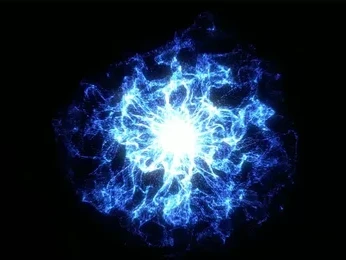It starts with a simple, comforting ritual. The kettle clicks off. You pour boiling water into your favorite new mug, a cheerful, autumnal piece you picked up on a whim. But instead of the gentle aroma of tea, you hear a sharp crack. The base of the mug gives way, and a wave of scalding water floods your kitchen counter.
This isn't a hypothetical. This is the scenario that prompted the retailer B&M to pull its ‘Harvest Print Glass Mug’ from the shelves. The headlines, of course, framed it with the predictable sense of alarm: "B&M product urgently recalled," "fears it could cause scalding." It’s easy to read this as just another story of corporate failure, another defective product in a world of mass production.
But I think that’s the wrong way to look at it. In fact, I think it’s the exact opposite of the real story.
When I see a headline like this, I don’t see a failure. I see a system working with breathtaking efficiency. I see an invisible network of data, regulation, and communication flexing its muscles to protect us in ways we rarely even notice. What we’re witnessing isn’t a breakdown; it’s a quiet, modern miracle of preventative safety.
Beyond the Alarm: The Hidden Genius of Our Safety Net
The Unseen Safety Net
Let’s pull back the curtain for a moment. What actually happens when a product like this is recalled? It’s not just one person making a phone call. It’s a cascade of interconnected events. A potential risk is identified—in this case, the mug’s base breaking—and immediately a vast, complex system kicks into gear. A specific batch code, 423987, is flagged and traced through a sprawling logistics network. This uses the UK’s General Product Safety Regulations—in simpler terms, it’s a rulebook that legally obligates companies to ensure their products are safe, and to act immediately if they’re not.
Imagine the data pipeline—from a single report of a shattered base to that batch code being flagged across a national distribution network to a public notice being pushed to millions of phones, it's a cascade of information moving at the speed of light to prevent a single person from getting burned. This isn’t just good corporate practice; it’s a technological and regulatory marvel.
Think about it. A century ago, a dangerous product could remain on the market for years, its toll measured in quiet, undocumented tragedies. Today, we have a system that can identify and recall a faulty mug that only went on sale on July 21st. This is the public health equivalent of upgrading from the Pony Express to fiber-optic communication. It’s a paradigm shift in how we manage risk as a society.
And the stakes are so much higher than a spilled cup of tea.

Just last month, the retailer TK Maxx recalled a range of children’s swim vests. The reason? They carried an incorrectly applied safety mark and hadn't been properly tested. The official notice warned they "could pose a risk of drowning." When I first read those details, I honestly had to take a moment. The thought of a parent, acting in good faith, strapping their child into a safety device that was never actually proven to work… it’s a stark reminder of why this invisible system is so profoundly important. The vests were not "appropriately conformity assessed," which is a technical term—put simply, it means the product never went through the rigorous, legally required testing to prove it could actually do its one, vital job: help a child float.
The recall notice for those vests, decorated with innocent patterns of whales and unicorns, was an urgent plea: "stop using it immediately." That’s the system at its most critical, acting as a digital guardian angel.
What this all points to is a future where the gap between identifying a danger and neutralizing it is shrinking to almost zero. We’re building a world that is proactively, intelligently, and systematically safer. But this system has one crucial component that technology alone can’t provide: us.
It’s fascinating to look at the social media chatter surrounding B&M around the same time. The biggest "controversy" wasn't the potentially hazardous mug. It was the fact that the store had put out advent calendars in August. The comments were a mix of playful outrage and genuine frustration. "Can't believe Christmas stock is being put out," one person wrote, "it's depressing." Another just added: "It's AUGUST!!"
I don’t bring this up to mock anyone. It’s a perfectly human reaction. But it’s a powerful illustration of where we often focus our collective attention. While we debate the seasonal creep of tinsel and chocolate, the truly vital conversations—the ones that can prevent injury or save a life—are happening in the form of recall notices. TK Maxx’s warning ended with a simple, powerful call to action: "SPREAD THE NEWS: Tell your friends and family about this recall!"
That’s our role. That’s the human node in this incredible safety network. The system can flag the batch code and issue the warning, but it relies on our vigilance and our community spirit to ensure the message reaches everyone. This brings with it a profound ethical responsibility. In an interconnected world, looking out for each other is no longer just a nice idea; it’s a functional requirement of a safe society.
So the next time you see a headline about a product recall, try to see beyond the initial sense of alarm. Look for the deeper story. See the intricate dance of data, the strength of our regulations, and the quiet triumph of a system designed not just to react to tragedy, but to prevent it from ever happening in the first place. What does that future look like? It looks safer, smarter, and more resilient than ever before.
*
The Signal Through the Noise
So, what’s the real takeaway here? It's that we are living in an age of invisible armor. While we are distracted by the noise of daily life—the trivial debates, the minor outrages—a powerful, data-driven system is quietly working in the background to shield us from harm. These recalls aren't signs of a broken world. They are proof that we are building a better one.
Reference article source:
